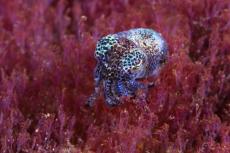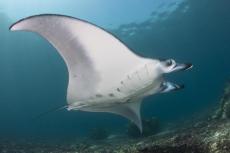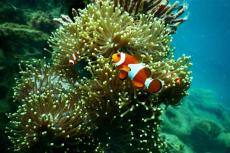Komodo Holds Large Aggregation of Manta Rays
A new study reports a large number of manta rays in the waters of Komodo National Park, Indonesia, suggesting the area may hold the key to regional recovery of the threatened species.
Scientists teamed up with local dive operators to source photographs of manta rays visiting the parks' waters and submit them to MantaMatcher.org - a crowdsourced online database for mantas and other rays.
As a result of these collaborative efforts, 1,085 individual manta rays were identified in Komodo National Park, Indonesia.
Manta ray preferences
The photographs’ accompanying time and location data is used to construct sighting histories of individual manta rays, which can then be analysed with statistical movement models. These models predict the likelihood that manta rays are inhabiting or travelling between specific sites. The study’s results showed that some manta rays moved around the park and others as far as the Nusa Penida MPA (>450 km to the west), but overall, manta rays showed individual preferences for specific sites within the Park
Threats
Fishing activities have been prohibited in many coastal areas within Komodo NP since 1984, offering some protection to manta rays prior to the 2014 nationwide protection. However, due to illegal fishing activity and manta ray movements into heavily fished waters, manta rays continue to face a number of threats from fisheries.
The popularity of tourism to these sites grew by 34% during the course of the study. An increase in human activity can negatively impact manta rays and their habitats. In 2019, the Komodo National Park Authority introduced limits on the number of boats and people that visit one of the most famous manta sites.
Conservation
“This study shows that the places where tourists commonly observe manta rays are important for the animals to feed, clean, and mate. This means that the Komodo National Park should create measures to limit the disturbance at these sites,” said Mr. Ande Kefi, an employee of the Komodo National Park involved with this study. “I hope that this study will encourage tourism operators to understand the need for the regulations already imposed and increase compliance.”
To further enhance manta ray conservation, the authors of the study recommend limiting the number of tourism boats allowed at one time at manta ray aggregation sites and making mandatory codes of conduct for diving and snorkeling with manta rays.
































